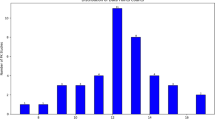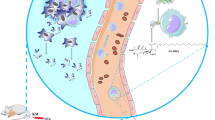Abstract
Pegylated liposomal formulations contain lipid conjugated to polyethylene glycol. The disposition of encapsulated drug is dictated by the composition of the liposome, thus altering the pharmacokinetic (PK) profile of the drug. Allometric scaling is based on a power-log relationship between body weight (W) and drug clearance (CL) among mammals and has been used to compare the disposition of nonliposomal drugs across species. The objectives of this study were to use allometric scaling to: (1) compare the disposition of pegylated liposomal drugs across speciesand determine the best scaling model and (2) predict PK parameters of pegylated liposomal drugs in humans. The PK of pegylated liposomal CKD-602 (S-CKD602), doxorubicin (Doxil®), and cisplatin (SPI-077) were compared. PK studies ofS-CKD602, Doxil®, and SPI-077 were performed at the maximum tolerated dose (MTD) in male and female mice, rats, dogs and patients with refractory solid tumors. The allometric equation used to evaluate the relationship between W and CL in each species was CL = a(W)m (a = empirical coefficient; m = allometric exponent). Substitution of physiological variables other than body weight, such as factors representative of the mononuclear phagocyte system (MPS) were evaluated. Dedrick Plots and Maximum Life-Span Potential (MLP) were used to determine scaling feasibility. Standard allometry demonstrated a relationship between clearance of S-CKD602, Doxil®, and SPI-077 and body, spleen, liver, and kidney weights, total monocyte count, and spleen and liver blood flow. However, using scaling to predict CL of these agents in humans often resulted in differences >30%. Despite a strong correlation between body weight and MPS-associated variables with CL among preclinical species, the use of the equations did not predict CL. Thus, new methods of allometric scaling and measures of MPS function need to be developed.


Similar content being viewed by others
References
Jain RK (1996) Delivery of molecular medicine to solid tumors. Science 271(5252):1079–1080
Zamboni WC, Houghton PJ, Hulstein JL, Kirstein M, Walsh J, Cheshire PK, Hanna SK, Danks MK, Stewart CF (1999) Relationship between tumor extracellular fluid exposure to topotecan and tumor response in human neuroblastoma xenograft and cell lines. Cancer Chemother Pharmacol 43(4):269–276
Blochl-Daum B, Muller M, Meisinger V, Eichler HG, Fassolt A, Phemaberger H (1996) Measurement of extracellular fluid carboplatin kinetics in melanoma metastases with microdialysis. Br J Cancer 73(7):920–924
Muller M, Mader RM, Steiner B, Steger GG, Jansen B, Gnant M, Helbich T, Jakesz R, Eichler HG, Blochl-Daum B (1997) 5-fluorouracil kinetics in the interstitial tumor space: clinical response in breast cancer patients. Cancer Res 57(13):2598–2601
Drummond DC, Meyer O, Hong K, Kirpotin DB, Papahadjopoulos D (1999) Optimizing liposomes for delivery of chemotherapeutic agents to solid tumors. Pharmacol Rev 51(4):691–743
Zamboni WC (2005) Liposomal, nanoparticle, and conjugated formulations of anticancer agents. Clin Cancer Res 11(23):8230–8234
Papahadjopoulos D, Allen TM, Gabizon A, Mayhew E, Matthay K, Huang SK, Lee KD, Woodle MC, Lasic DD, Redemann C (1991) Sterically stabilized liposomes: improvements in pharmacokinetics and antitumor therapeutic efficacy. Proc Natl Acad Sci USA 88(24):11460–11464
D’Emanuele A, Attwood D (2005) Dendrimer-drug interactions. Adv Drug Deliv Rev 57(15):2147–2162
Allen TM, Martin FJ (2004) Advantages of liposomal delivery systems for anthracyclines. Semin Oncol 31(6 Suppl 13):5–15
Allen TM, Stuart DD. Liposome pharmacokinetics: Classical, sterically-stabilized, cationic liposomes and immunoliposomes. In: Janoff AS (ed) Liposomes: rational design. Marcel Dekker, Inc., New York, pp 63–87
Maeda H, Wu J, Sawa T, Matsumura Y, Hori K (2000) Tumor vascular permeability and the EPR effect in macromolecular therapeutics: a review. J Control Release 65(1–2):271–284
Lee JH, Lee JM, Lim KH, Kim JK, Ahn SK, Bang YJ, Hong CI (2000) Preclinical and phase I clinical studies with CKD-602, a novel camptothecin derivative. Ann NY Acad Sci 922:324–325
Zamboni WC, Strychor S, Joseph E, Walsh DR, Zamboni BA, Parise RA, Tonda ME, Yu NY, Engbers C, Eiseman JL (2007) Plasma, tumor and tissue disposition of STEALTH liposomal CKD-602 (S-CKD602) and nonliposomal CKD-602 in mice bearing A375 human melanoma xenografts. Clin Cancer Res 13(23):7217–7223
Gabizon A, Shmeeda H, Barenholz Y (2003) Pharmacokinetics of pegylated liposomal Doxorubicin: review of animal and human studies. Clin Pharmacokinet 42(5):419–436
Gabizon A, Isacson R, Rosengarten O, Tzemach D, Shmeeda H, Sapir R (2008) An open-label study to evaluate dose and cycle dependence of the pharmacokinetics of pegylated liposomal doxorubicin. Cancer Chemother Pharmacol 61(4):695–702
Meerum Terwogt JM, Groenewegen G, Pluim D, Maliepaard M, Tibben MM, Huisman A, ten Bokkel Huinink WW, Schot M, Welbank H, Voest EE, Beijnen JH, Schellens JM (2002) Phase I and pharmacokinetic study of SPI-77, a liposomal encapsulated dosage form of cisplatin. Cancer Chemother Pharmacol 49(3):201–210
Meerum Terwogt JM, Tibbem MM, Wellbank H, Schellens JH, Beijnen JH (2000) Validated method for the determination of platinum from a liposomal source (SPI-77) in human plasma using graphite furnace Zeeman atomic absorption spectrometry. Fresenius J Anal Chem 366(3):298–302
Mahmood I, Balian JD (1999) The pharmacokinetic principles behind scaling from preclinical results to phase I protocols. Clin Pharmacokinet 36(1):1–11
Lin JH (1995) Species similarities and differences in pharmacokinetics. Drug Metab Dispos 23(10):1008–1021
Lindstedt L, Schaeffer PJ (2002) Use of allometry in predicting anatomical and physiological parameters of mammals. Lab Anim 36(1):1–19
Mahmood I, Balian JD (1996) Interspecies scaling: predicting clearance of drugs in humans. Xenobiotica 26(9):887–895
McNamara PG (1991) Interspecies scaling in pharmacokinetics. In: Welling PG, Tse FLS, Dighe SV (eds) Pharmaceutical bioequivalence. Marcel Dekker Inc, New York, pp 276–300
Boxenbaum H (1984) Interspecies pharmacokinetic scaling and the evolutionary-comparative paradigm. Drug Metab Rev 15(5–6):1071–1121
Sacher G (1959) Relation of lifespan to brain weight and body weight in mammals. In: Wolstenholme GEW, O’Connor M (eds) CIBA Foundation colloquia on aging. Churchill, London, pp 115–133
Boxenbaum H, Ronfeld R (1983) Interspecies pharmacokinetic scaling and the Dedrick plots. Am J Physiol 245(6):768–777
Dedrick R, Bischoff KB, Zaharko DS (1970) Interspecies correlation of plasma concentration history of methotrexate (NSC-740). Cancer Chemother Rep 54(2):95–101
Boxenbaum H (1982) Interspecies scaling, allometry, physiological time, and the ground plan of pharmacokinetics. J Pharmacokinet Biopharm 10(2):201–227
Brown RP, Delp MD, Lindstedt SL, Rhomberg LR, Beliles RP (1997) Physiological parameter values for physiologically based pharmacokinetic models. Toxicol Ind Health 13(4):407–484
Food and Drug Administration (2003) Draft guidance for industry and reviewers on estimating the safe starting dose in clinical trials for therapeutics in adult healthy volunteers. Fed Regist 68:2340–2341
Schneider K, Oltmanns J, Hassauer M (2004) Allometric principles for interspecies extrapolation in toxicological risk assessment—empirical investigations. Regul Toxicol Pharmacol 39(3):334–347
Sweeting JN, Siu M, McCallum GP, Miller L, Wells PG (2010) Species differences in methanol and formic acid pharmacokinetics in mice, rabbits and primates. Toxicol Appl Pharmacol 247(1):28–35
Toutain PL, Ferran A, Bousquet-Melou A (2010) Species differences in pharmacokinetics and pharmacodynamics. Handb Exp Pharmacol 199:19–48
Hunter RP (2010) Interspecies allometric scaling. Handb Exp Pharmacol 199:139–157
Dedrick RL (1973) Animal scale-up. J Pharmacokinet Biopharm 1(5):435–461
Calder WA (1984) Size, function and life history. Harvard University Press, Cambridge, Massachusetts
Yamato O, Hayashi M, Kasai E, Tajima M, Yamasaki M, Maede Y (1999) Reduced glutathione accelerates the oxidative damage produced by sodium n-propylthiosulfate, one of the causative agents of onion-induced hemolytic anemia in dogs. Biochem Biophys Acta 1427(2):175–182
Tang H, Mayersohn M (2011) Controversies in allometric scaling for predicting human drug clearance: an historical problem and reflections on what works and what does not. Curr Top Med Chem 11(4):340–350
Quigley KA, Chelack BJ, Haines DM, Jackson ML (2001) Application of a direct flow cytometric erythrocyte immunofluorescence assay in dogs with immune-mediated hemolytic anemia and comparison to the direct antiglobulin test. J Vet Diagn Invest 13(4):297–300
Zamboni WC, Maruca LJ, Strychor S, Zamboni BA, Ramalingam S, Edwards RP, Kim J, Bang Y, Lee H, Friedland DM, Stoller RG, Belani CP, Ramanathan RK (2010) Bidirectional pharmacodynamics interaction between pegylated liposomal CKD-602 (S-CKD602) and monocytes in patients with refractory solid tumors. J Liposome Res 21(2):158–165
Duncan JR, Prusse KW, Mahaffey EA (1994) Veterinary laboratory medicine clinical pathology, 3rd edn. Iowa State Univ Press, Ames, Iowa, p 235
Treseler KM (1995) Clinical laboratory and diagnostic tests, 3rd edn. Appleton and Lange, Norwalk, Connecticut, p 117
Fischbach F (2004) A manual of laboratory diagnostic tests, 7th edn. Lippincottand Wilkins, Philadelphia, Pennsylvania, p 47
Sharp PE, LaRegina MC (1998) The laboratory rat. CRC Press, Boston, Massachussetts, pp 4–11
Zamboni WC, Strychor S, Maruca L, Ramalingam S, Zamboni BA, Wu H, Friedland DM, Edwards RP, Stroller RG, Belani CP, Ramanathan RK (2009) Pharmacokinetic study of pegylated liposomal CKD-602 (S-CKD602) in patients with advanced malignancies. Clin Pharmacol Ther 86(5):519–526
Wu H, Infante JR, Jones SF, Burris HA, Chan E, Keedy VL, Bendell JC, Zamboni BA, Kodaira H, Ikeda S, Zamboni WC (2009) Factors affecting the pharmacokinetics (PK) and pharmacodynamics (PD) of PEGylated liposomal irinotecan (IHL-305) in patients with advanced solid tumors. Mol Cancer Ther 8(12):C124
Li M, Al-Jamal KT, Kosarelos K, Reineke J (2010) Physiologically based pharmacokinetic modeling of nanoparticles. ACS Nano 4(11):3617–6303
Acknowledgments
The authors would like to thank Jerry Campbelland Miyoung Yoonof the Hamner Institutes for Health Sciences, Research Triangle Park, North Carolina for their helpful comments and suggestions during this study.
Author information
Authors and Affiliations
Corresponding author
Electronic supplementary material
Below is the link to the electronic supplementary material.
Rights and permissions
About this article
Cite this article
Caron, W.P., Clewell, H., Dedrick, R. et al. Allometric scaling of pegylated liposomal anticancer drugs. J Pharmacokinet Pharmacodyn 38, 653–669 (2011). https://doi.org/10.1007/s10928-011-9213-5
Received:
Accepted:
Published:
Issue Date:
DOI: https://doi.org/10.1007/s10928-011-9213-5




